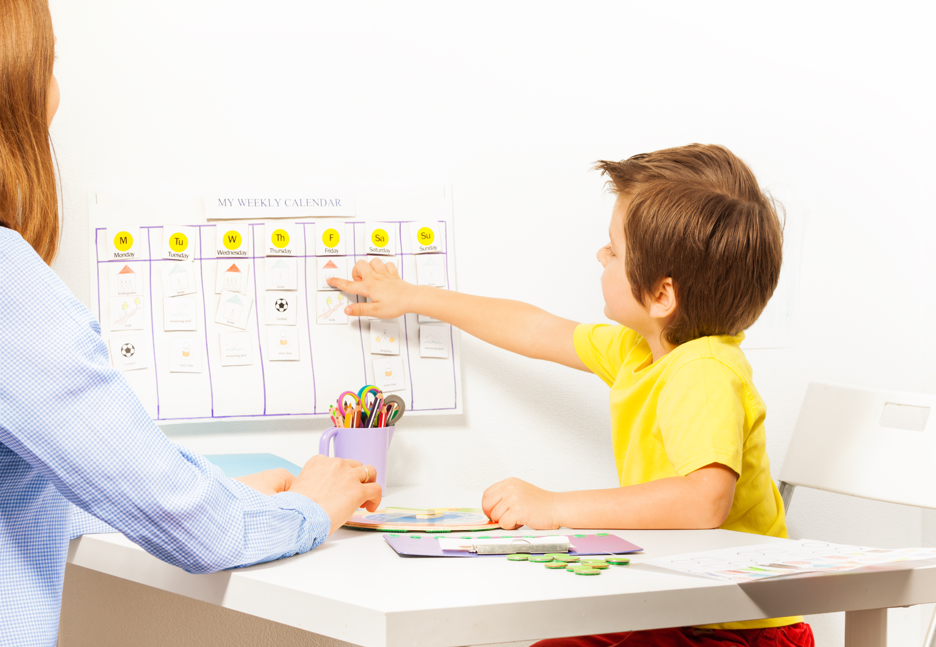Understanding Challenging Behavior
Your child is screaming and won’t stop. She does this every night at dinnertime, and you’re running out of patience. What do you do?
When you find yourself with fraying nerves and feel unsure of how to handle the situation, it can be helpful to take a step back and observe. If you can describe your child’s behavior based solely on what you observe, and separate this from how it makes you feel, you might be able to figure out why your child is engaging in the behavior. Then, you can use targeted strategies to address the behavior and bring peace to the evening routine.
The concepts that we will discuss in this blog series come from the field of applied behavior analysis, or ABA for short. The techniques may be useful for parents who have children with autism or related special needs, as well as for families of neurotypical children. After all, challenging behavior is a part of being human! It’s something that all parents confront at some point. The good news is that there are tried and true ways to shape behavior into more positive forms – methods that are compassionate and effective.
Step 1: Describe the behavior
When you describe a challenging behavior using objective terms, you bring yourself closer to understanding why it’s occurring and how you might be able to address it.
For example, if your child is having tantrums, what does that look like? What is the child doing, or not doing, and how long does it last? For example, a child who throws themself on the floor and cries for 10 minutes might need a different set of strategies than a child who runs around dumping or throwing toys. Keep a log of the date, time of day, any context surrounding the behavior and what the behavior looked like.
Step 2: Figure out the behavior’s function
Most behavior serves a purpose for your child and can also tell you something about their needs. In the applied behavior analysis field, we think of behavior as having four main functions. We explain them using the acronym E.A.T.S.:
- Escape/Avoidance
- Attention (from others)
- Tangible (access)
- Sensory (self-soothing)
Let’s break that down a little bit.
Escape/Avoidance behavior occurs because the child wants to get away from something or someone. For example, if you suggest going for a walk, and your child yells, “No!” and flops on the ground, they are communicating that they do not share your desire for a walk. You may be tempted to just drop it. Understand that if you do, you are teaching your child that the best way to avoid an activity is to drop to the ground and yell.
On the other hand, if you use proactive strategies designed to encourage your child to participate in the walk, they may learn to enjoy walking and be less inclined to protest in the future.
Attention from Others involves behavior your child uses to get social attention, which could be positive or negative. For example, how many of us have children who interrupt us every time we’re in a conversation with a friend or neighbor? If our children successfully gain our attention by interrupting, that serves to reinforce the behavior and increases the likelihood that it will happen again.
If we instead use strategies to help our children wait patiently or use more appropriate behavior to get our attention, they learn impulse control, and we might find ourselves enjoying uninterrupted conversations more often!
Tangible (Access) behavior occurs when a child tries to physically gain access to something they desire.
For example, if Zoey is playing with a toy, and her sister, Olivia, comes and pulls her hair, Zoey may drop the toy and run off crying. Olivia then learns to use similar behavior to gain access to Zoey’s toys in the future. To keep Zoey safe and happy and set boundaries for Olivia, Olivia and Zoey’s parents could prompt Olivia to appropriately ask Zoey for a turn with the toy and reinforce Olivia’s request with the desired toy.
Sensory behavior feels internally pleasing to the child in a sensory way and can be connected to one or more senses–sight, smell, hearing, taste, or touch. For example, nail biting, rocking back and forth, and thumb sucking can produce a pleasant internal feeling or remove an unpleasant feeling.
Behavior that falls into this category typically occurs across multiple settings and environments and is considered self-reinforcing or self-stimulating, so the act of engaging in the behavior increases the likelihood that it will happen again in the future. As we mentioned in our post about celebrating neurodiversity, the ABA field has evolved to accept these stimulating behaviors, like hand-flapping and bouncing, as long as they don’t impede the child’s social interactions and learning.
Main Takeaways
Challenging or difficult behaviors test the patience of even the most compassionate parents. Taking a moment to mentally step away from the situation and observe the behavior objectively can be really helpful. As you get more comfortable being an objective observer of your child’s behavior, you’ll find yourself better able to figure out what exactly is happening, why it’s happening, and what may be causing the behavior to reoccur.
Understanding challenging behavior in this way is the first step to managing it. In our next post in this series, we’ll give you some effective strategies for addressing challenging behavior.
Download free printable positive behavior change resources.
For more tips on using ABA strategies visit our Youtube channel.




